Juanita Frier
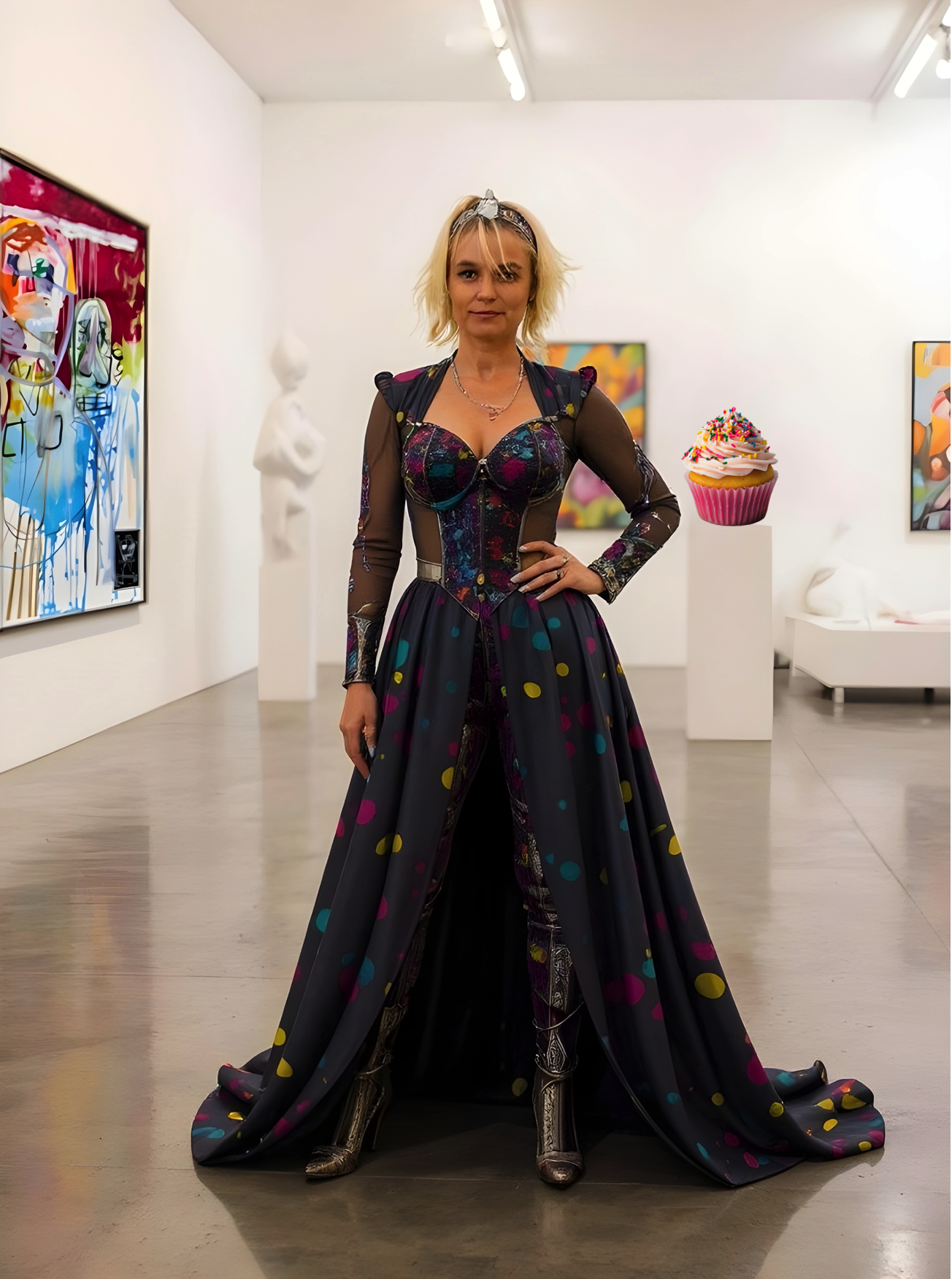
Surprisingly, Juanita tells me that narrative is not important to her in her artwork, that she doesn’t try to get across some deep meaningful concept, that in fact she tries to focus on positivity. Although, there is a clear detail and almost conclusive portrayal of the unconscious in her artworks, and more poignantly as it derives from her self-meditation, to ironically “live in that moment,” she explains. Juanita has no formal education as an artist, but she is not quite a self-taught either, her work has always been about experimentation. Learning from her first tutor, who was her mentor when she was discovering art, working predominantly with mosaics at the time. Already then, she had an abstract view of society. Her work has always been boundary-breaking because she didn’t know anything else, she tells me. Then, as she has matured into the art scene and acquired an understanding of the artists around her from Picasso, Adebayo Bolajii to George Condo, her individuality developed. The innocence portrayed in her work, as if created by a child, they are there as psychological references to everything around us. From the darker depths of politics, to the daily lives of living, in a multicultural society and the mundane of what is ordinary. There are references to surrealist automatism and how it all intertwines to create a tapestry of diversity in how she sees daily life. This poignant and yet innocent observation of human life, in this century, encumbers it all: it reflects how a child lives in the moment and how they observe the world around them, making sense of it all. This beauty is reflected in Juanita’s work. The thought processes with this method of painting entails the exclusion of enforced rationale. This idea of naïveté, the core of creativity, the exploration of emotion and what an artwork evokes in us.
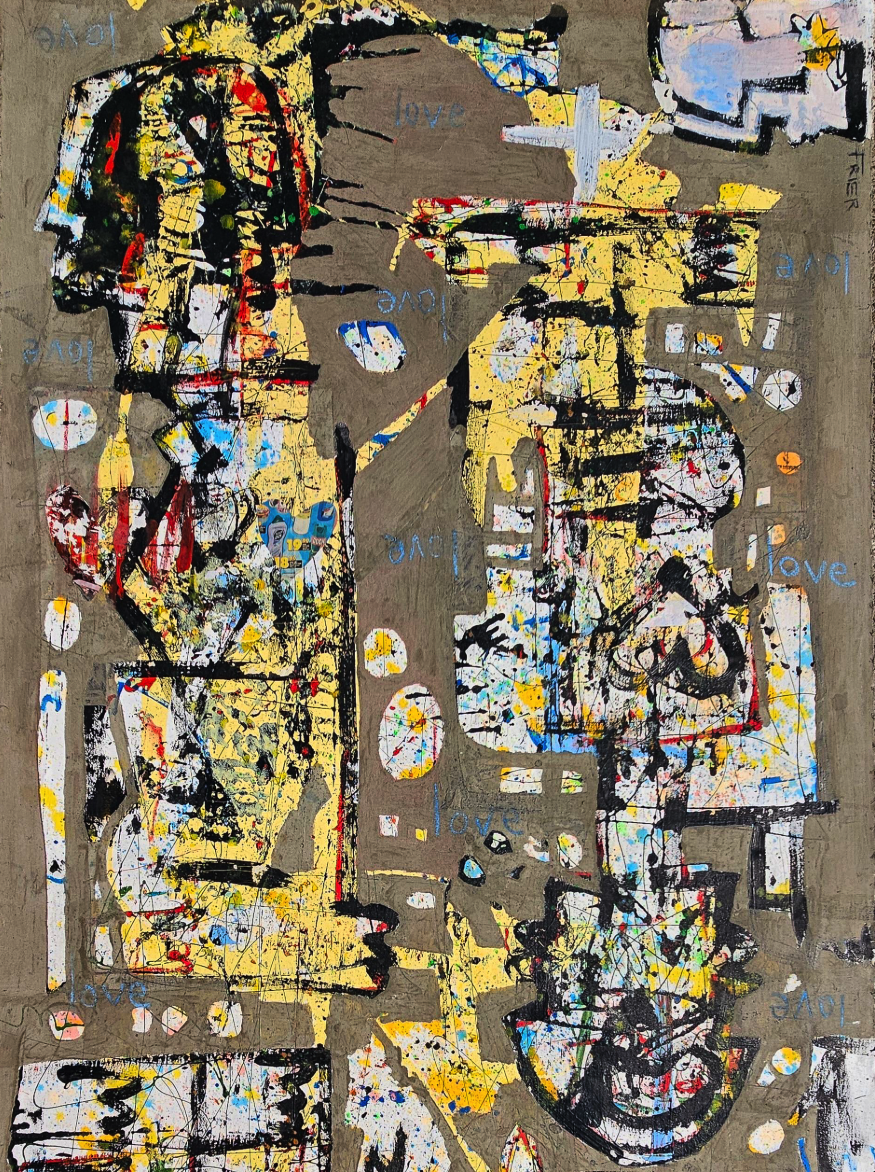
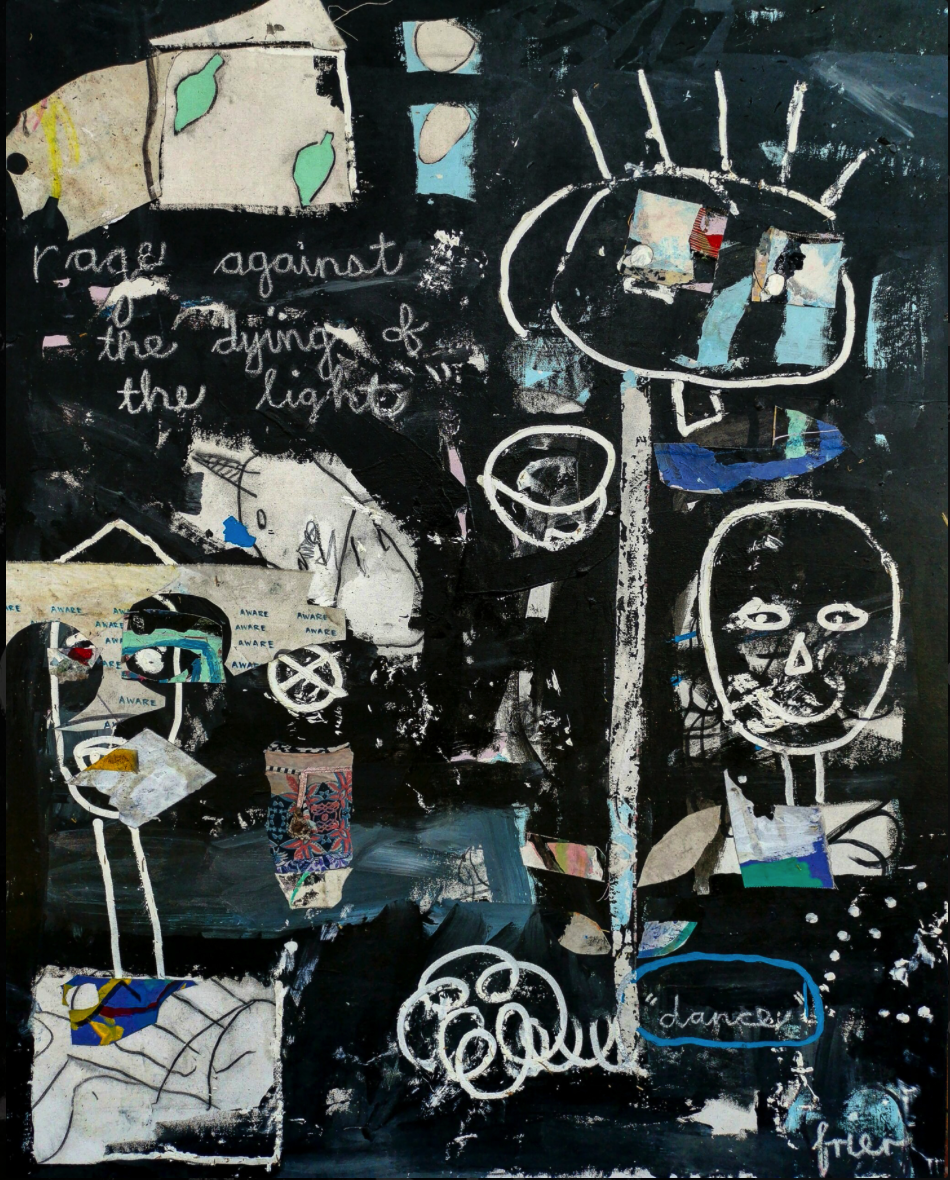


Juanita was introduced to me by Art Eye gallery in South Africa her work has been exhibited in Austria, Czechoslovakia, as well as South Africa. As I always do when I talk to artists, I want to talk about her childhood. She tells me about being raised by her grandmother in Natures Valley in the Western Cape for the first five years of her life, as it was considered taboo, for her then single mother to have child out of wedlock, in the conservative South Africa at the time. She vaguely remembers this period, and recalls her grandmother sewing and making things, and how she called her mother by her nickname, and still does. Her parents eventually married, and she then went to live with them and her siblings. There was a lot of moving around, she tells me, and they finally settled in Saabie. Juanita describes the small town, “There was no art and no robots,” she says, smiling broadly. ‘Robots’ a South African term for traffic lights, as she emphasises the conservative, small town she grew up in, and that her education at school didn’t involve art. The closest to creativity was home economics, and when she graduated from High School, and moved to Johannesburg. It was in this city that she discovered art. Describing the first time she encountered a Picasso in a book, she doesn’t recall exactly where, but this had a huge impact on her, and it was through books that he enquiry into the art world began. She stated working on signage for shops to make money, and this is where she met her first tutor, an art teacher at the art foundation, a charity called Joy, who became he mentor and friend. He owned a little art gallery, and she started assisting him with cutting the mosaics for his artworks. He additionally tutored her in drawing and water colours. “I think his grandfather was a famous a sculptor, so he came from a long line of artists,” she clarifies.
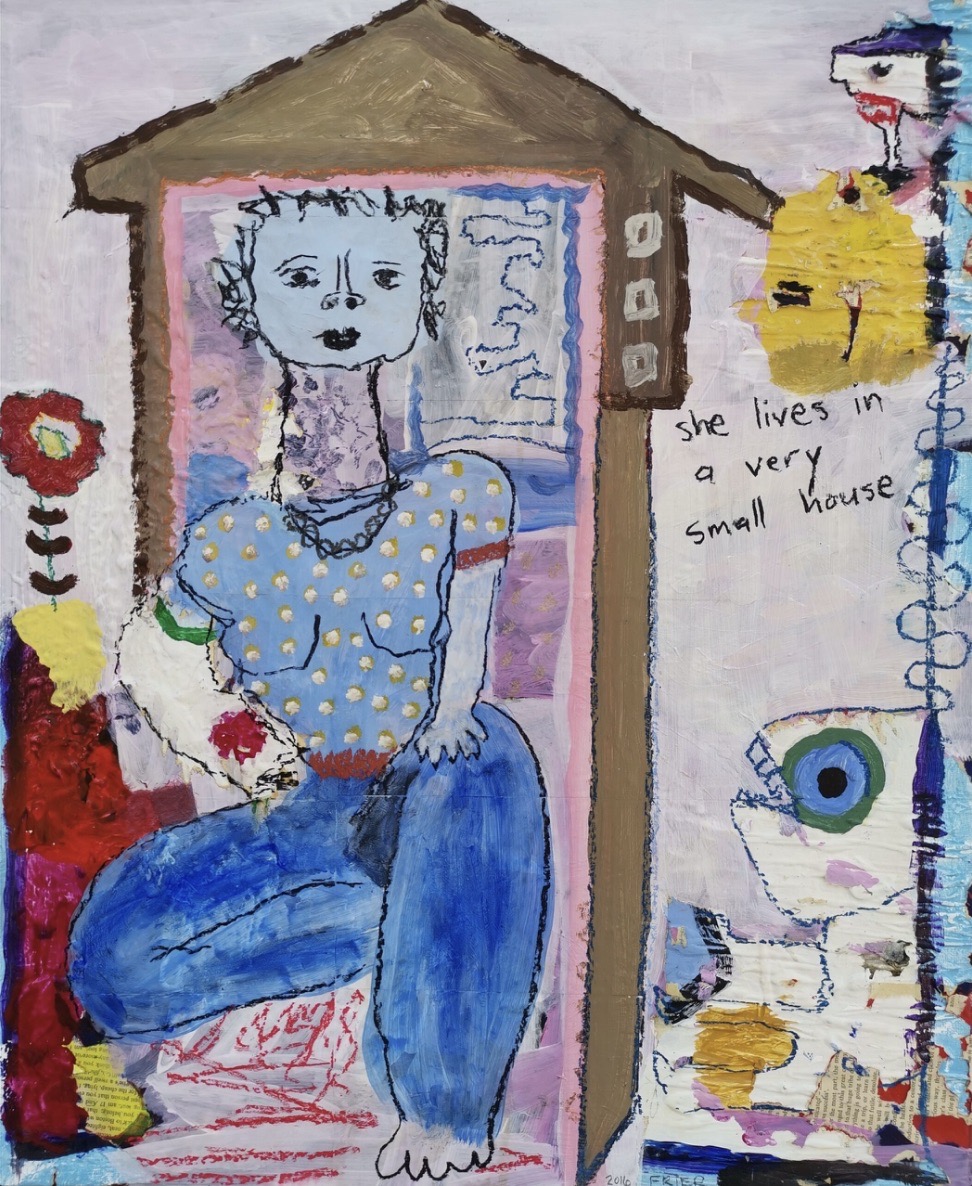
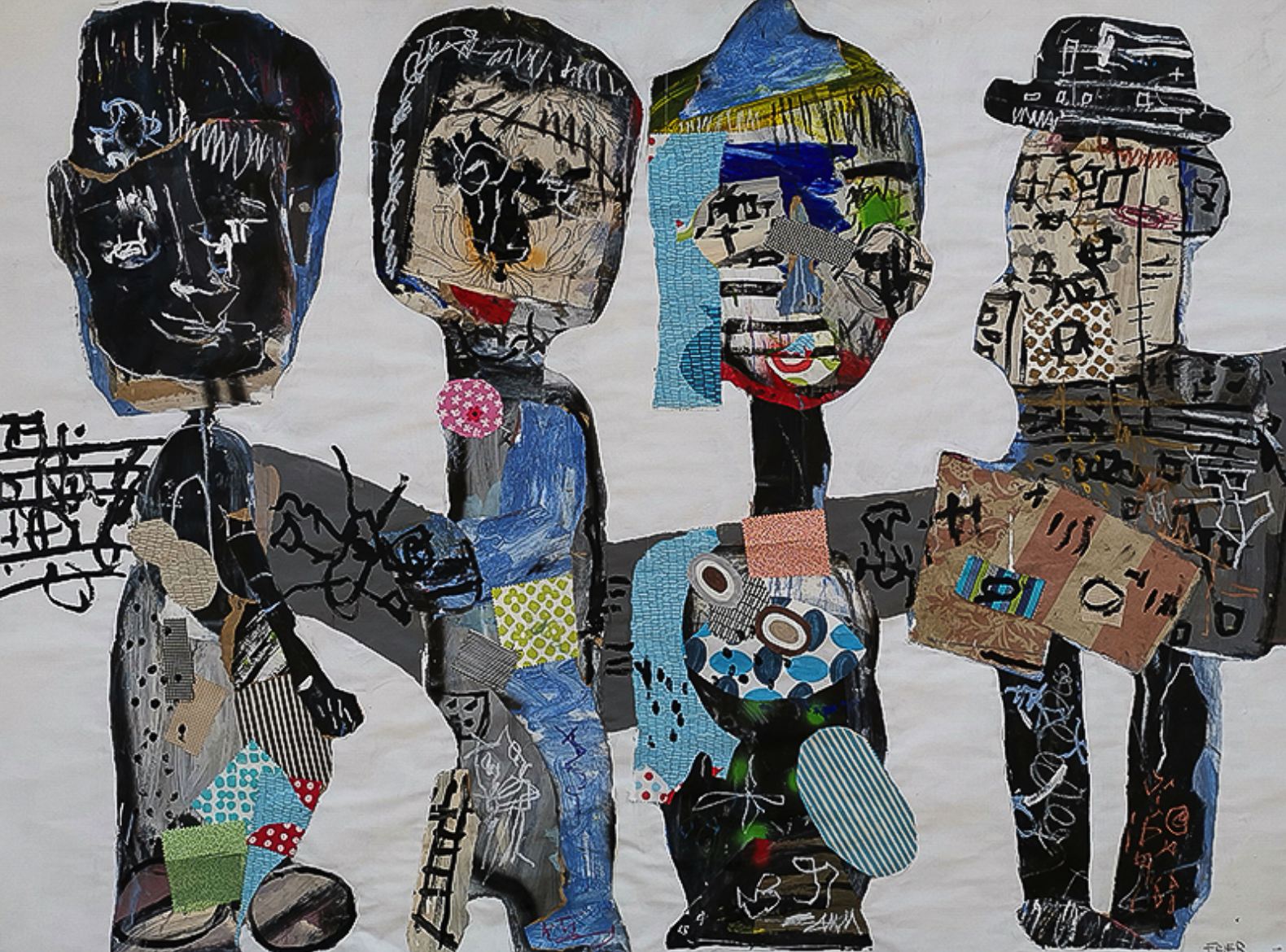
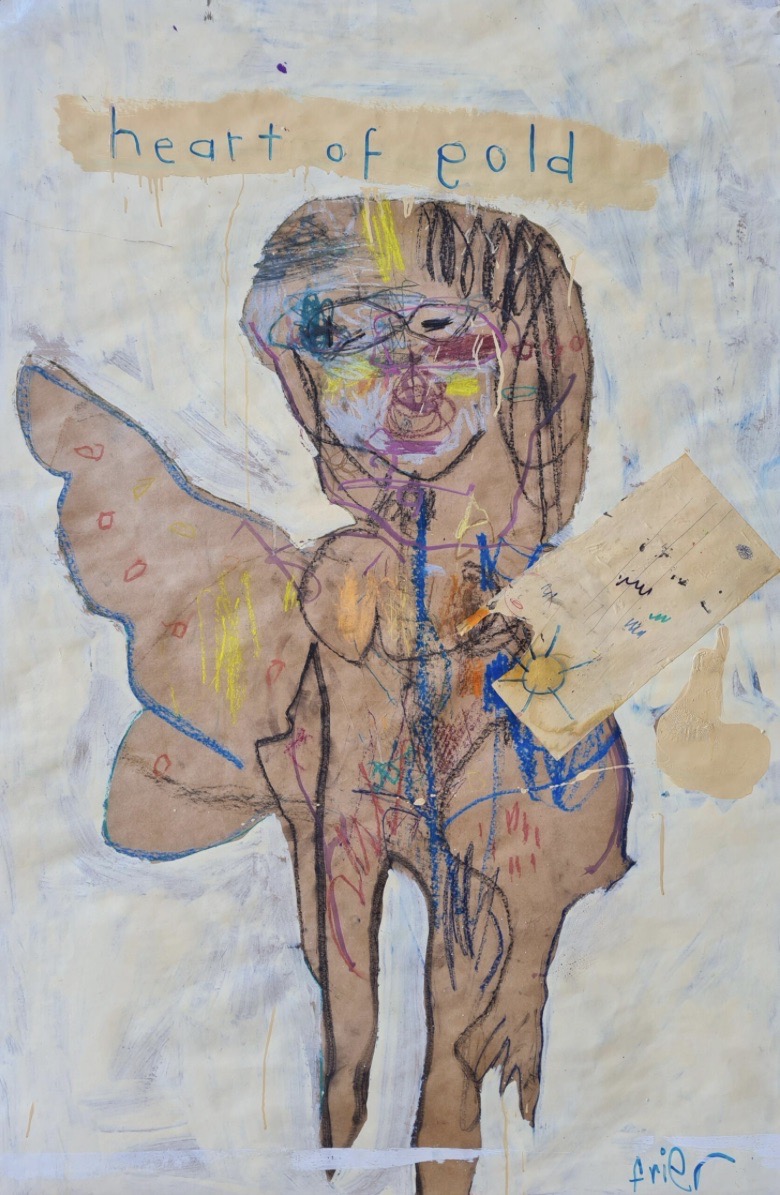
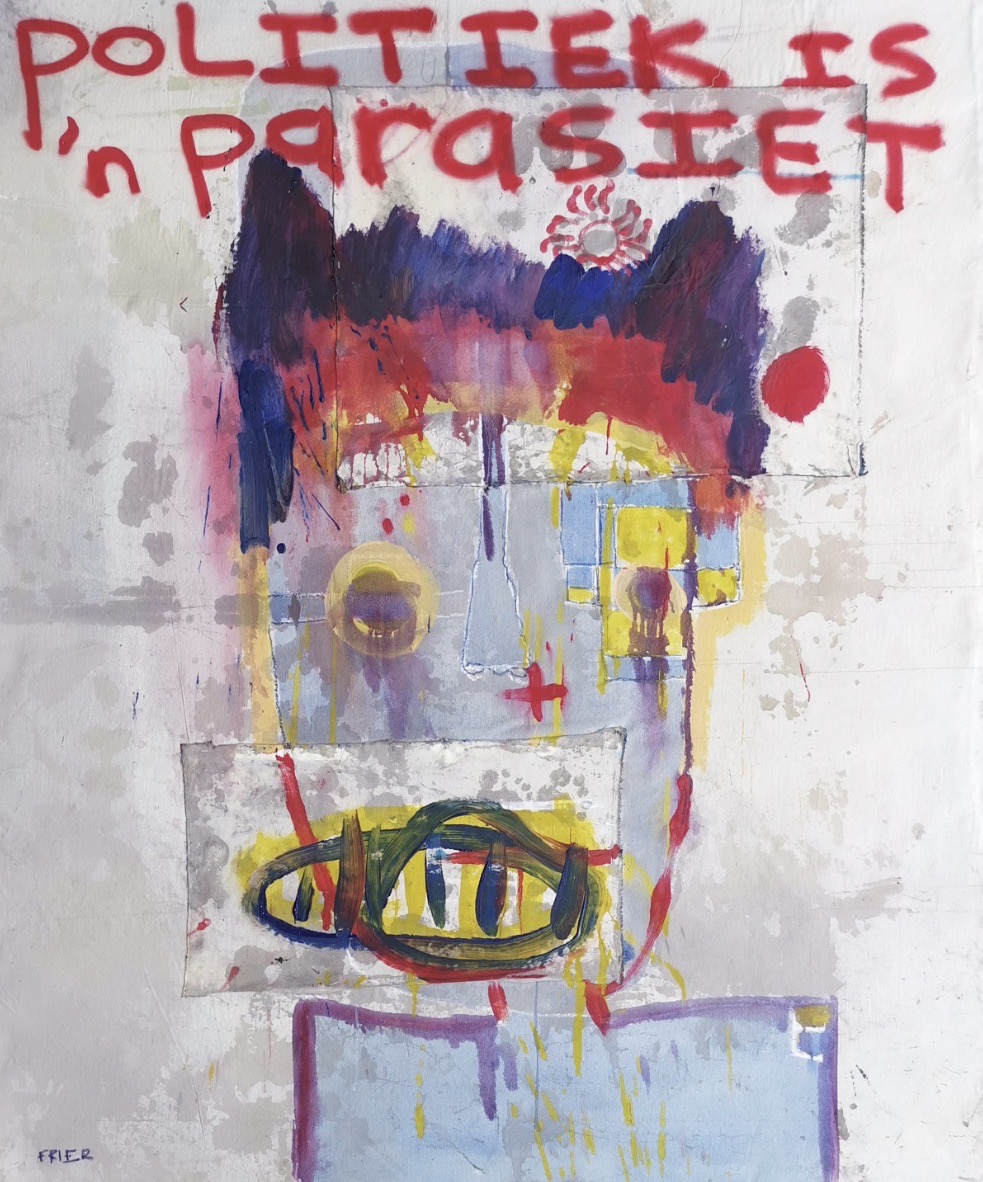
However, her tutor, was supposed to do a performance piece at the poetry theatre, he felt unwell and sent Juanita to go in his place with another artist, who eventually became another big influence, mentor and teacher as well. Working together with portrait painting classes and joint exhibits, a collector came to one of their exhibitions and gave them a gallery. Free of charge, which they ran for two years. Juanita describes this experience as difficult, as she didn’t have a full-time job, so sitting in the gallery all day was left to her, and she describes the monthly events with various exhibitions as engaging and fun. However, the rest of the time, they never really sold much art. It was disheartening, and it was at this juncture that she took to taking her art more seriously. It all began when her tutor signed on with Art Eye Gallery, she was introduced to them, and it all took off from there. Art Eye provided her with a studio space for two years, and she would take the bus to the studio every day, meditate and plan her work, to make three paintings a day. “But then, after a year or two of doing that, I decided to choose what I want to paint, you know. So if there was a song that I wanted to paint, then I could. Other times it literally was just being in the moment” Juanita tells me.
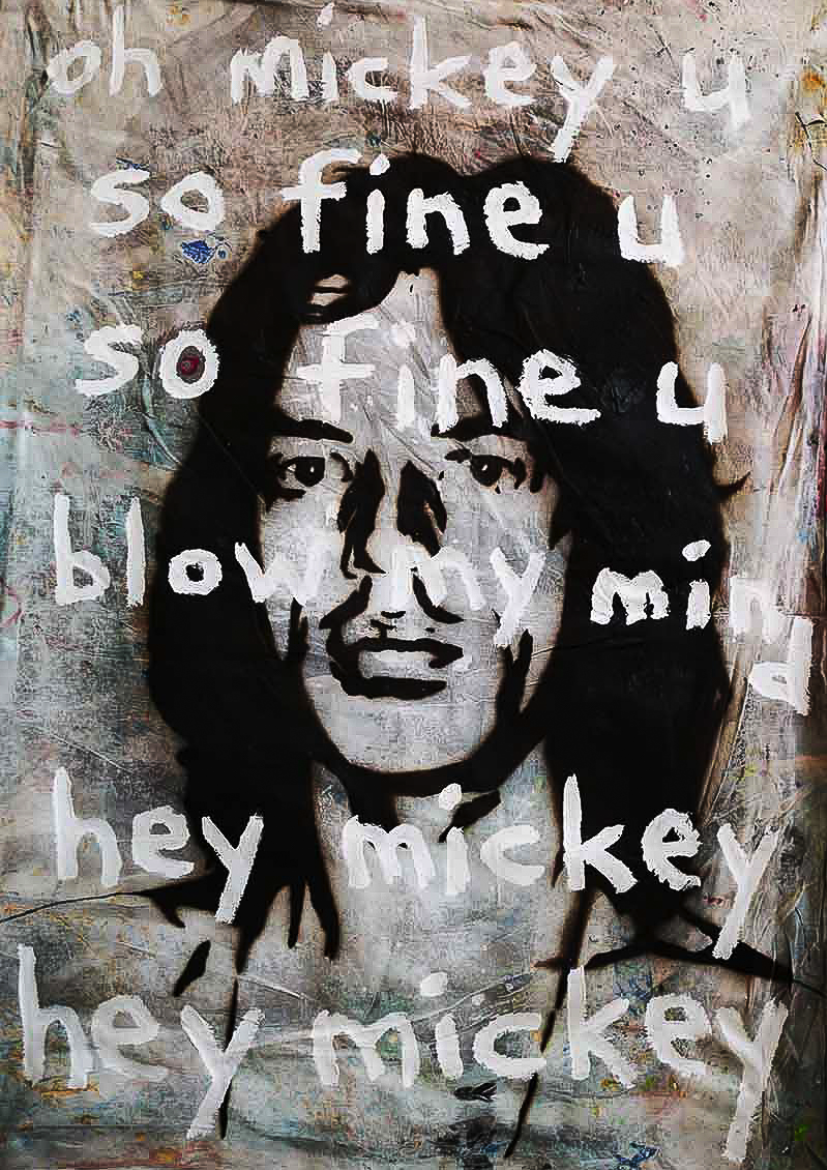
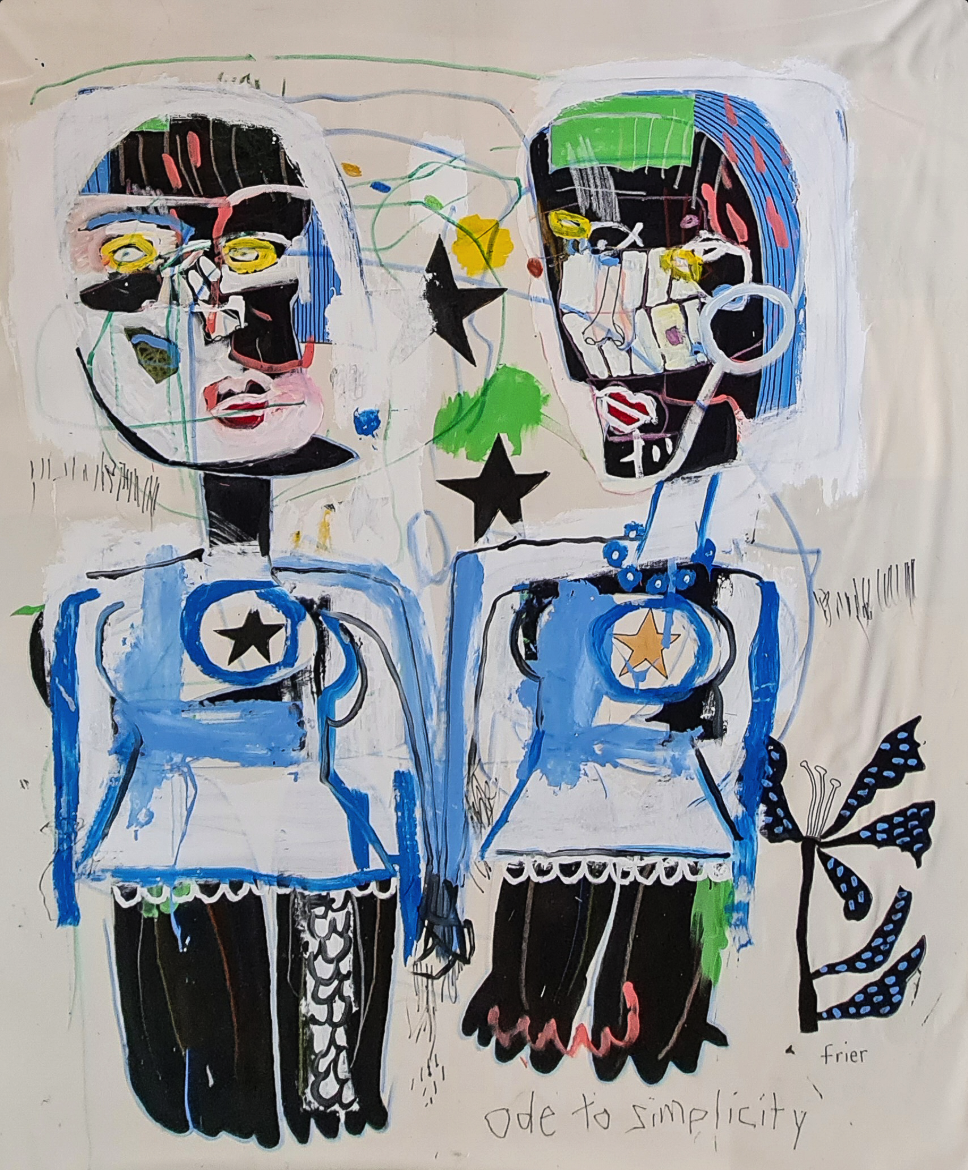
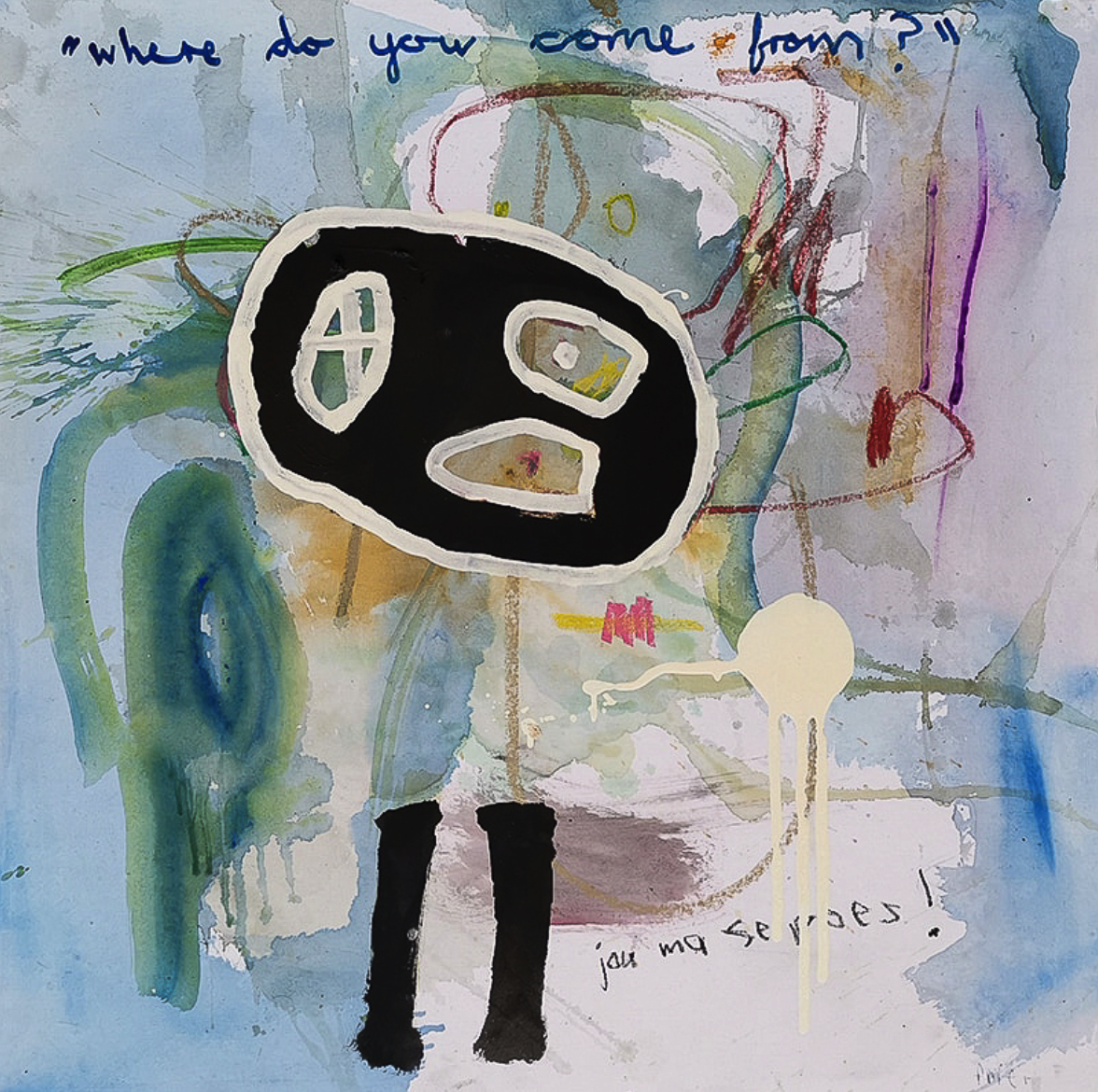
We discuss her earlier works, based on consumerism, Juanita explains the collages at the time, taking art from magazines and making little collages of these things. Now her work is just straight painting, “But now what happens is I paint a painting and then cut up the painting and use that as a collage for the next painting. I don’t use other people’s images anymore when I collage,” she explains. I pick up the conversation that I see a narrative in her work, and ask Juanita if that narrative is not intentional. “I would say that, you know, I do have rules. You know, it has to be somehow a positive and have an uplifting frequency over vibration or something that must come from a place like that, or otherwise it must be pure truth” Juanita emphases.
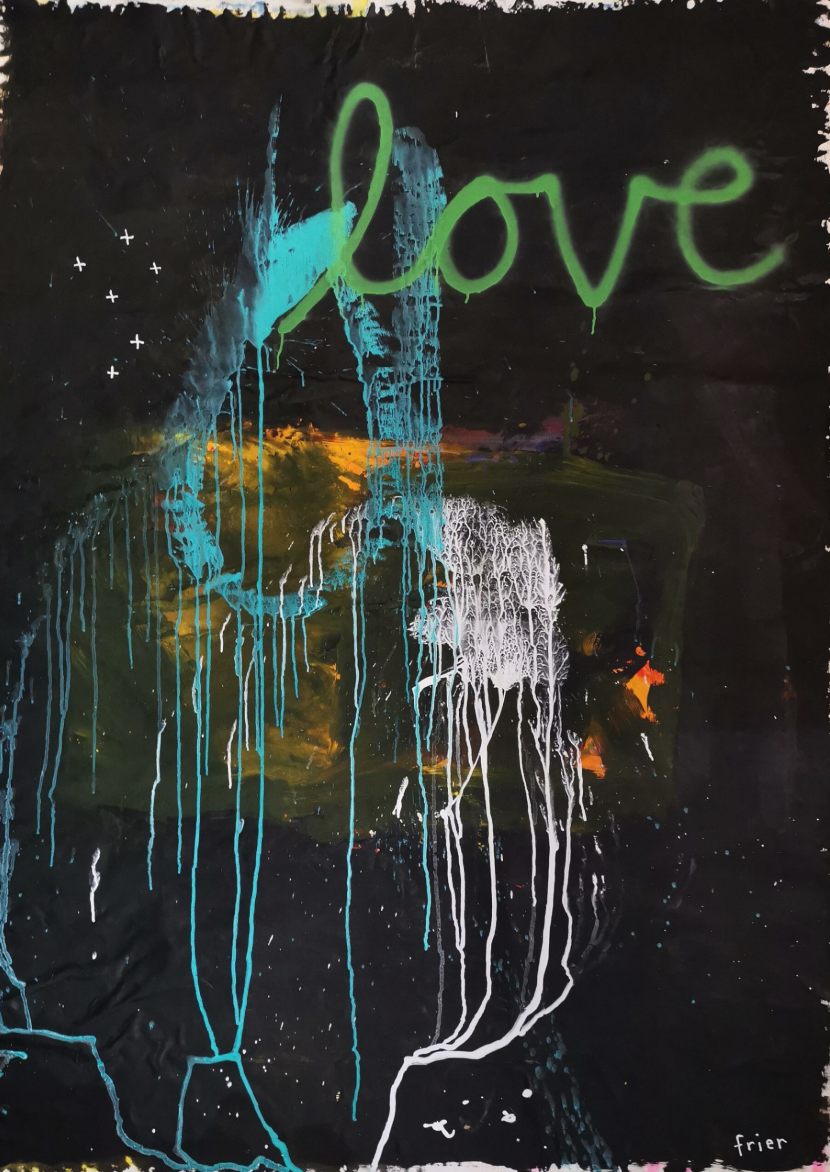
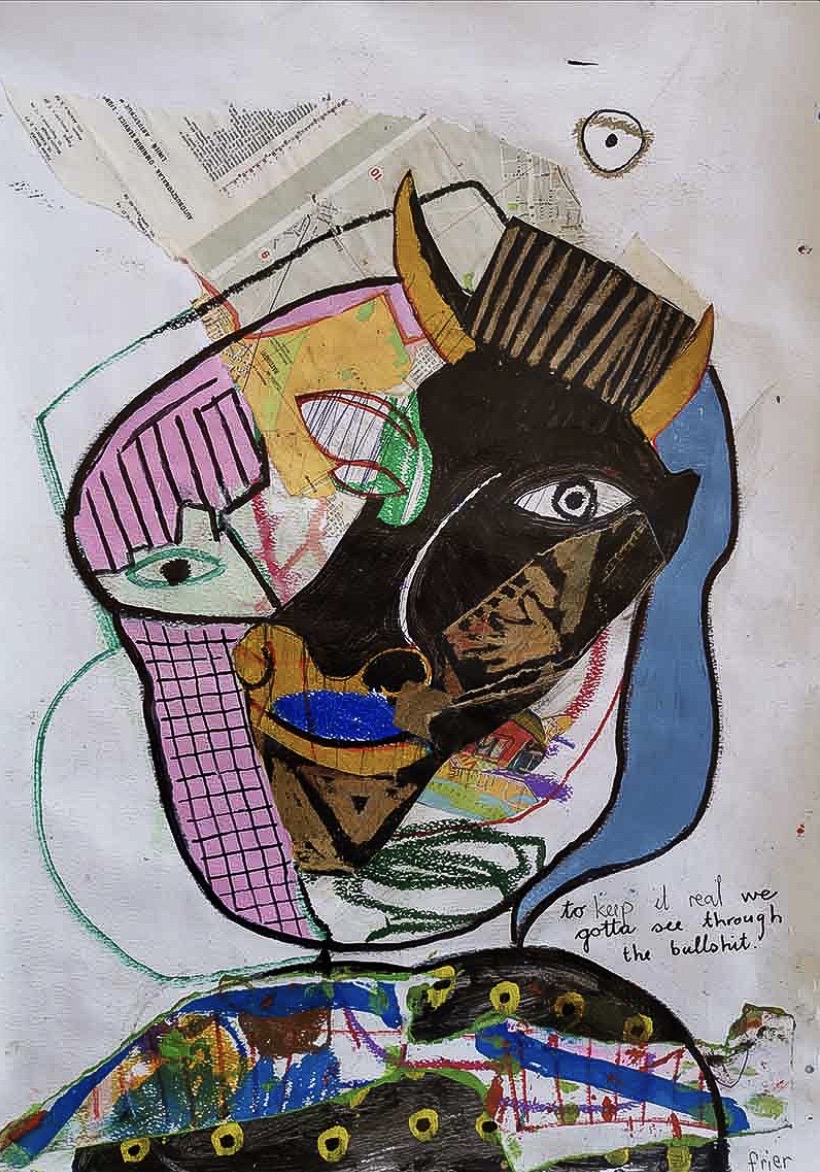
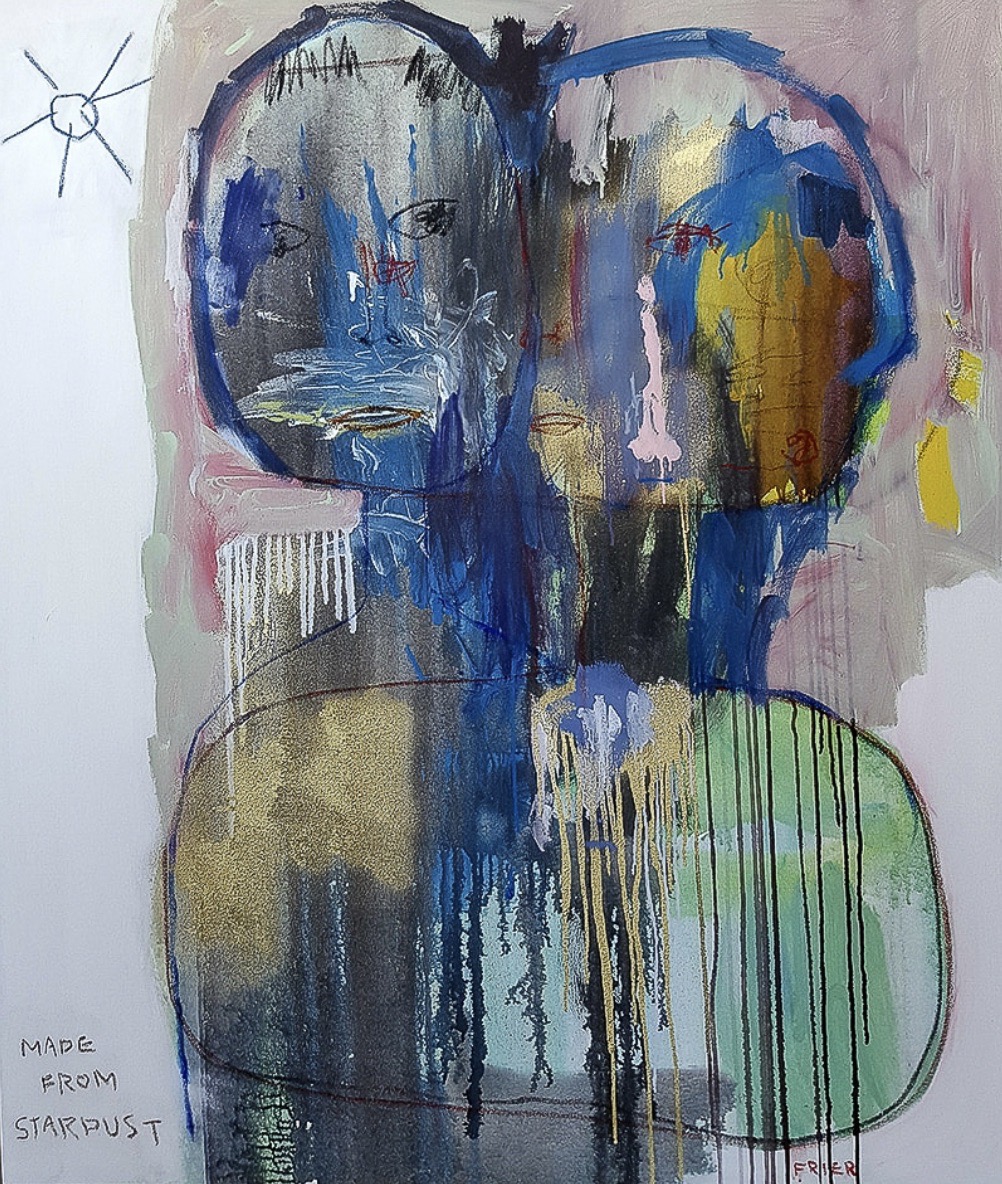
She describes what drew her to art that it was just wonderful and amazing, “I couldn’t believe that such a thing exists, I mean, that you could paint, you know, for a living, make sculptures”. Then our topic moves to how Juanita believes her upbringing impacted your art. “I think so,” she believes everyone’s upbringing impacts them, that is how we become individuals, she explains, “Just that nature versus nurture. I mean, it’s just scientifically been proven that your environment shapes you. So, I mean, if I was born in Gaza, I would have been a completely different person, because you’re not only a different language. It’s a different situation, a different environment. I mean, it’s all different. And then if you were born in Hawaii again, you know, everything would have been a completely different, a person with different insights and different interests. So, definitely I think where we are born and how we grew up and everything has a huge impact. I mean, it’s half the story of who you are”. I continue to probe how she feels her upbringing impacted her art, “I think just by it being unique, as everyone’s stories are, it gives you a unique approach, which is what art should be. It should never be a copy of something else”. Juanita grew up during apartheid “I finished school in 1991, and apartheid only finished in ’94. So it was it was basically my whole upbringing.” How that impacted her art? “I found that since the beginning of painting, I’ve never painted colours in people. You can never tell you’re a white guy, is it a blue guy, I mean, you’re a black guy, you’re a brown guy. I mean, all my people are, you know, like different colours, you know, like more like rainbow colours” she emphasises. “But so I think that comes from an unconscious level. So strangely, growing up in all that apartheid, I mean, soul-wise, I think my soul recognised that people are people.”
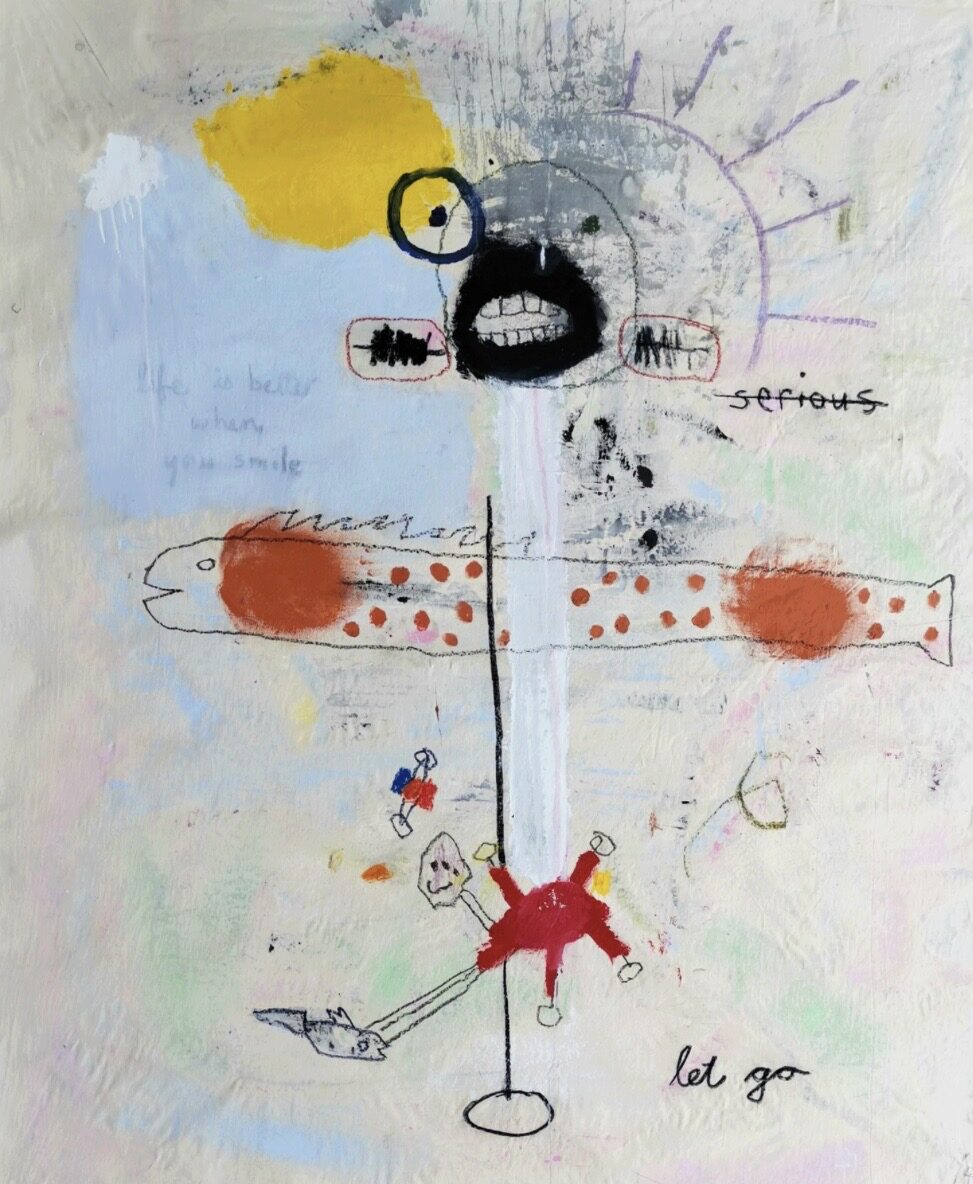
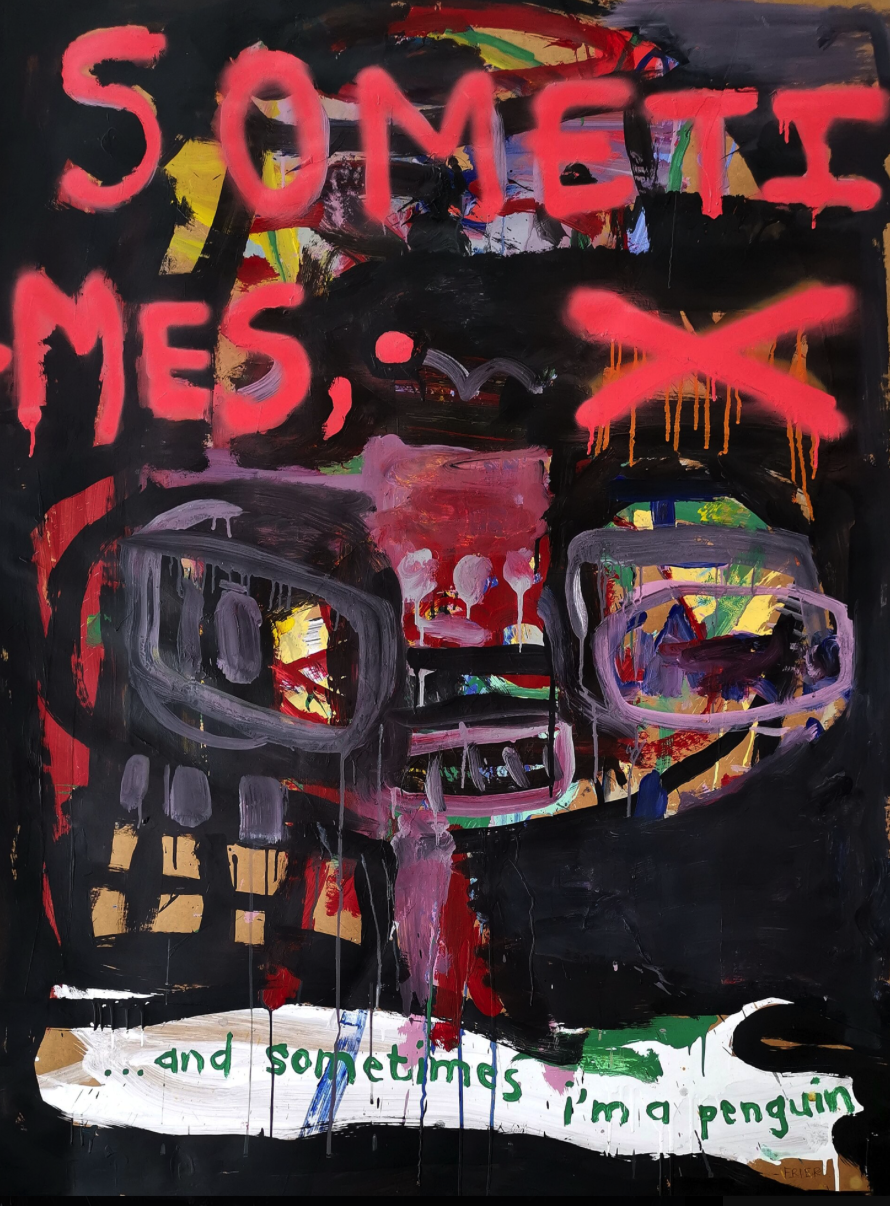
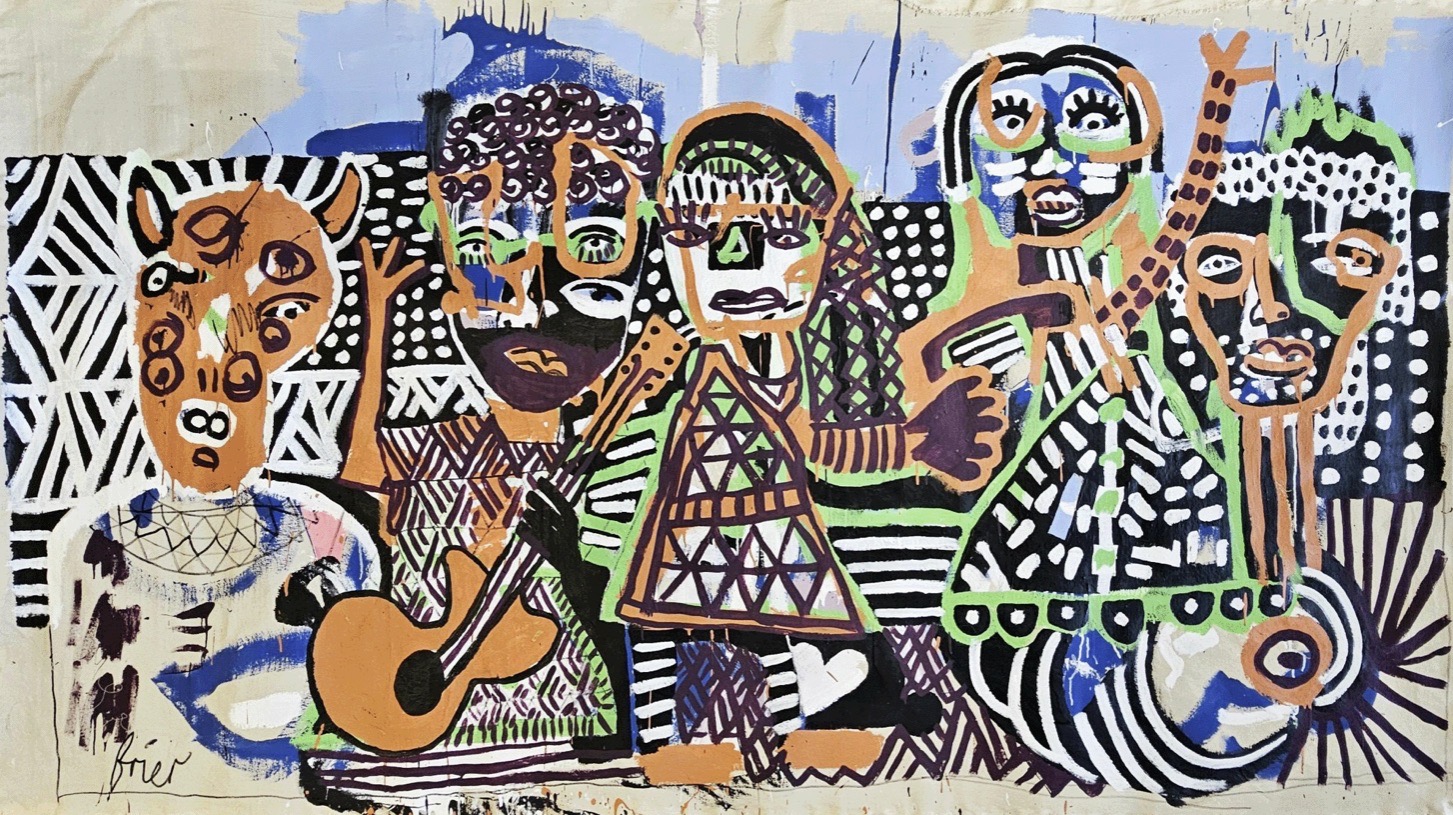
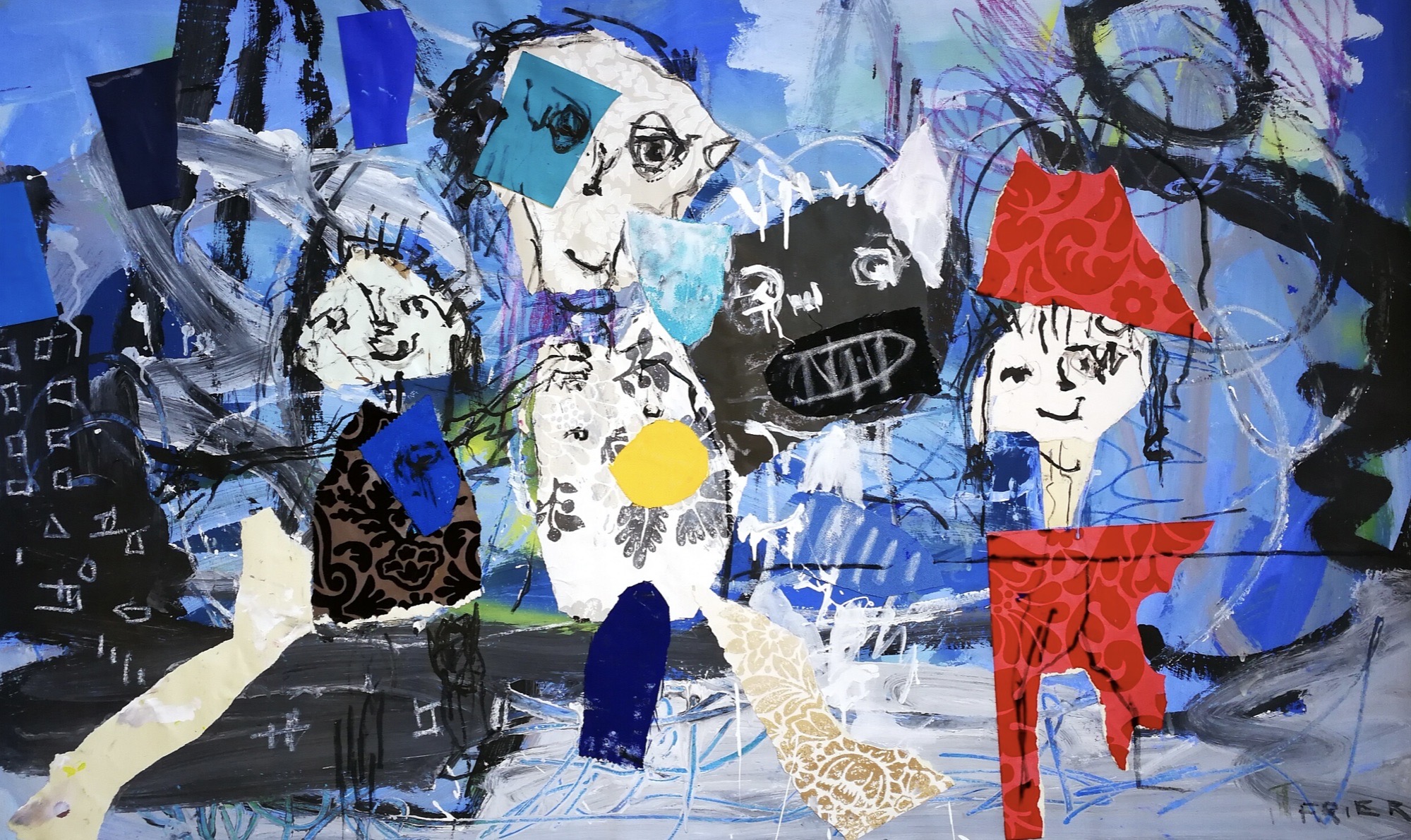
As our conversation closes, I grab a few more questions; who are her favourite artists? Tom Lee, George Condo, Robert Nava, and Jonathan Meese are the favourites. We talk about the idea what Juanita considers perfection. “It doesn’t exist” she exclaims, then pauses and creatively tells me about perfect moments in life, “Sometimes, you have a taste of some food and it tastes like perfection. Or it can just be like a moment when you’re on a boat or whatever, somewhere beautiful, and the sun is setting. I mean, you can have moments of perfection, definitely, but as objects, I don’t think it exists.” We crack on with what her plans are with her work, and she talks about beginning to try and work on some new artworks that are more on a conscious level. “So it will be nice to be more conscious, I would like to know, become more conscious of what I do and then still have some spontaneity,” she explains, “So this year, I’m hoping to somehow crack down on that.” Her plans for the rest of the year, “A show in Hong Kong this October,” she tells me with excitement.
Interview: Antoinette Haselhorst
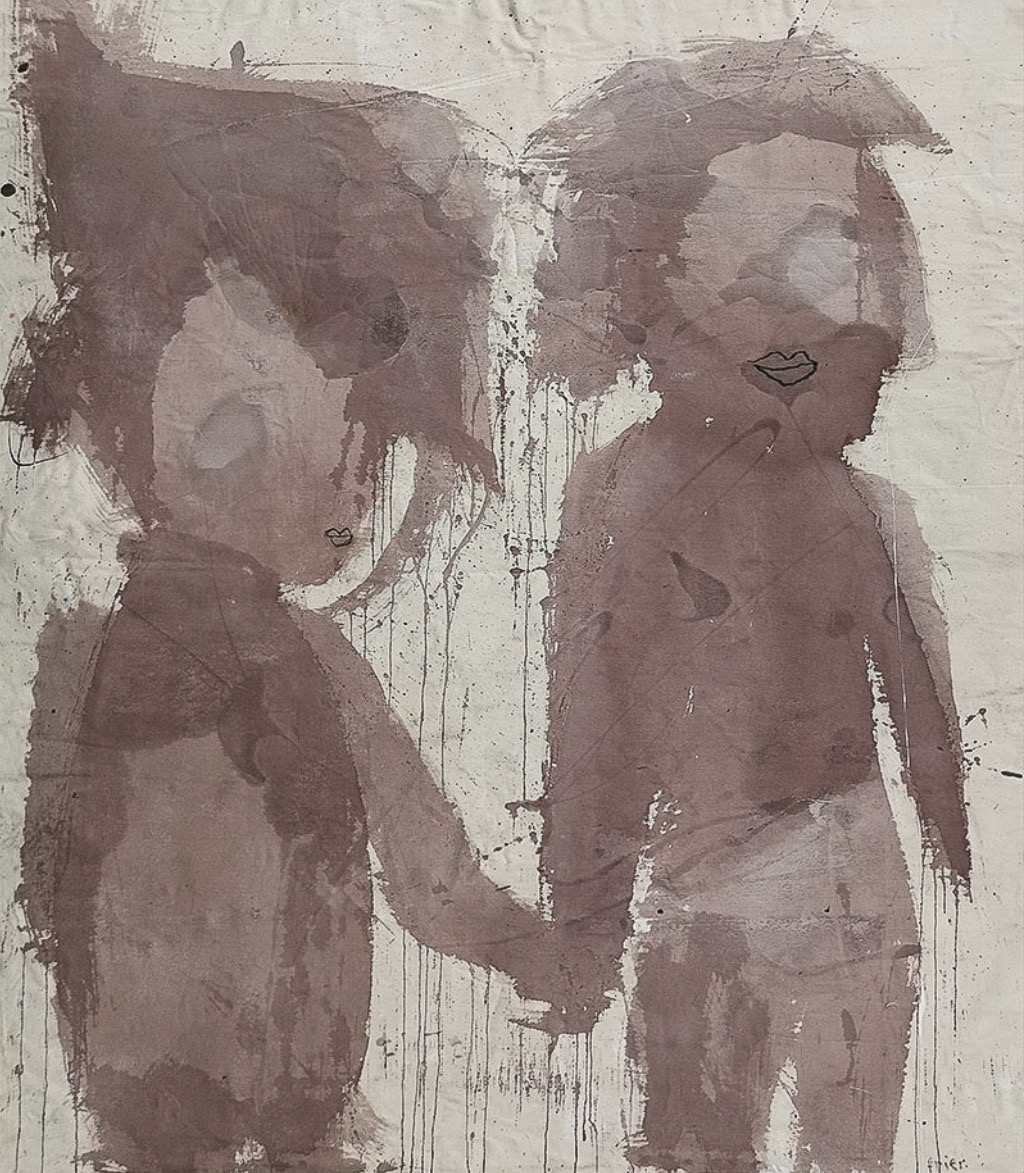
2 Replies to “Juanita Frier”
Juanita is a great person with a golden heart and a outstanding Artist
Josef Schütz
Hi Josef, it was a pleasure to interview her, remarkable artist.